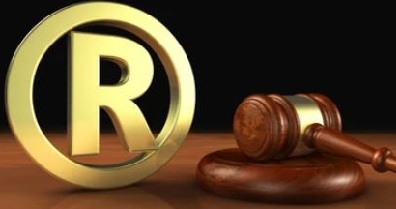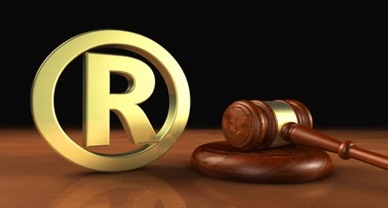Effect Of Non-Use Of Trademark
Introduction
Trademarks may include any distinctive sign or mark that contributes in differentiating goods or services those of the competitors. Once the mark is registered under trademark act, the mark then gives the proprietor some rights to enjoy with the trademark repetitively and liabilities to maintain so that the proprietor doesn’t lose the ownership.
In order to maintain the owner’s rights, a trademark must be used and periodically renewed; otherwise, the proprietor might lose the validity and the right of enforcing the trademark. Also under the trademark laws it is necessary to show the use of the trademark or else a trademark which has been abandoned by the owner or proprietor can be withdrawn solely the ground of disuse/non-use of trademark.
What Is Non-Use Of Trademark
Eventually trademarks serve as effective marketing tools for their owners. As a result of this, the consumer start recognising the product due to its strong reputation and constant quality which helps the producer itself, this helps to determine the origin of goods or services provided by a producer or the service provider and functions as an advertising tool. It necessitates a lot of effort to establish a mark’s originality and uniqueness, consequently registering a trademark is not a simple process.
[Image Sources : Shutterstock]
A trademark’s removal from the trademark registration is the consequence of non-use. The Trademarks Act of 1999’s Section 2(2)(c) establishes a distinction between the usage of a mark in accordance with products and services. Use with regard to goods is the application of the mark to, or any other physical or other relationship with the goods. In M/S. J.N. Nichols (Vimto) Limited vs Rose & Thistle And Another[i] , the Calcutta High Court interpreted meaning of the word ‘use’ in a wider sense. The court in this case held that ‘use’ does not necessarily mean and imply actual physical sale; even mere advertisement without having even the existence of goods can be said to be a ‘use’ of the mark. It is necessary to emphasized repeatedly that the term “use” only refers to bona fide use or to legitimate uses made in the regular course of business and not merely uses made to only reserve the right to a mark. Therefore, for a usage to be considered legitimate, the mark must really be utilized for commercial gain. Contrarily, unless the contrary can be proven, any registered trademark that hasn’t been used for 5 years following registration and 3 months before to registration is subject to revocation or removal from the trademark registry.
Also, IPAB and Indian Courts did not hesitate to cancel the registration of well-known International brands as it was observed in the case of Cadbury, Burger King and M/s Pops Foods Products (p) Ltd. vs. M/s Kellog Co.[ii] , wherein this case, the IPAB invalidated the Kellog Co. trademark on the grounds of 22 years of non-use. If a trademark has not been used for at least three months previous to the date the application for registration was filed, or if it has not been used for at least five years thereafter the registration in any of the classes in which it was registered. Consequently, such a mark may be struck from the trademark registry. A trademark can be removed on any of the following grounds:
- No bona fide Intention
- Non-use for five years
However, there is an exemption to this rule, according to which a trade mark will not be taken from the register if the owner or mark holder can establish distinctive grounds for its non-use. The exceptions comprise of restrictions imposed by law and circumstances where there is no intention to prevent from using the mark.
Effect Of Non-Use Of Trademark
Any registered trademark can be revoked after 5 years of the date the registration process was completed if the mark has not been used lawfully by the mark holder with his consent, and as if they do not state down valid justifications for not using it. The principal consequence of non-use on a trademark is its removal from the trademark registration.
If a trademark has not been utilized for five years, it may be withdrawn from the register, unless it can be proved that the absence of use was caused by the existence of “special circumstances” in the business and not by any intention to stop using the mark. In K.R Beri & Co. v. The Metal Godds Mfg. Co Pvt Ltd. and Anr[iii] , According to the Division Bench, the term “usage” does not necessarily entail an actual, physical sale of the products. It can also refer to advertising without even implying that the commodities exist. In such modification and opposition processes, the mark owner may forfeit their trademark rights if they haven’t used the mark for more than five years and three months. Although the entity who requests correction typically has the burden of proof, the burden of proof may be changed during the hearing to the trademark owner. The owner’s mark may be struck off the register if they fail to prove the usage of the mark. If a registered trademark has not been utilised by the owner in connection with those goods or services for a continuous period of five years or more, it may be withdrawn from the register. The Hon’ble Supreme Court in the Kabushiki Kaisha Toshiba v. TOSIBA Appliances[iv] stated that “The intention to use a trade mark sought to be registered must be genuine and real.” The bench further explained that “when a trade mark is registered, it confers a valuable right. It seeks to distinguish the goods made by one person from those made by another. The person, therefore, who does not have any bona fide intention to use the trade mark, is not expected to get his product registered so as to prevent any other person from using the same.” According to Section 47 of the Trade Marks Act, a trademark may be removed from the register once it has been registered whereas if applicant fulfils one of the following conditions: the applicant might very well request the removal of the trademark on the grounds that the proprietor registered it without intending to use it in connection with the relevant goods or services.
Conclusion
In India, there is no need or requirement for any type of on-going specific proof of use, and it is not even necessary when using a trademark. Hence it is necessary that a new provision to be introduced that it demands the proof of use of that trademark and since a mere inclusion of mark in the advertisement also stands to use of it should also be looked upon again because this has led to blockage of many trademark hence if those are released by the proprietors the others people or institution can make a sound use of it. But due to this clause the trademark is reserved to them for 5 years even to question of non-use it can be reduced to 2 or 3 years since it is sufficient time to give, 5 years is a huge time in mean while the others can avail the mark and make a fair use of the same. This can create or led to generation of sense of seriousness for the applicants and might reduce the unfair practice among them.
Author: Vaibhav Ramdas Misal is a 4th year student at Maharashtra National Law University, Aurangabad, in case of any queries please contact/write back to us at support@ipandlegalfilings.com or IP & Legal Filing.
REFRENCES
[i] M/S. J.N. Nichols (Vimto) Limited v. Rose & Thistle And Another [AIR (1994) Cal 43]
[ii] M/s Pops Foods Products (p) Ltd . v. M/s Kellog Co., [TRA/159/2004/TM/DEL]
[iii] K.R Beri & Co. vs. The Metal Godds Mfg. Co Pvt Ltd. and Anr [AIR (1980) Delhi 299]
[iv] Kabushiki Kaisha Toshiba v. TOSIBA Appliances [2008 (37) PTC 394]



